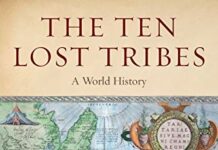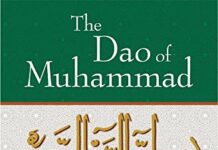
Ebook Info
- Published: 2005
- Number of pages: 280 pages
- Format: PDF
- File Size: 2.76 MB
- Authors: Zvi Ben-Dor Benite
Description
This book documents an Islamic-Confucian school of scholarship that flourished, mostly in the Yangzi Delta, in the seventeenth and eighteenth centuries. Drawing on previously unstudied materials, it reconstructs the network of Muslim scholars responsible for the creation and circulation of a large corpus of Chinese Islamic written material–the so-called Han Kitab. Against the backdrop of the rise of the Manchu Qing dynasty, The Dao of Muhammad shows how the creation of this corpus, and of the scholarly network that supported it, arose in a context of intense dialogue between Muslim scholars, their Confucian social context, and China’s imperial rulers. Overturning the idea that participation in Confucian culture necessitated the obliteration of all other identities, this book offers insight into the world of a group of scholars who felt that their study of the Islamic classics constituted a rightful “school” within the Confucian intellectual landscape. These men were not the first Muslims to master the Chinese Classics. But they were the first to express themselves specifically as Chinese Muslims and to generate foundation myths that made sense of their place both within Islam and within Chinese culture.
User’s Reviews
Editorial Reviews: About the Author Zvi Ben-Dor Benite is Professor in the Department of History and the Department of Middle Eastern and Islamic Studies at New York University.
Reviews from Amazon users which were colected at the time this book was published on the website:
⭐Zvi Ben-Dor has written a fascinating history of Muslims in China from the seventeenth to the early twentieth century, focused on Islamic scholarship. His work shows how Islam become rooted in a Chinese tableau, taking on both the intellectual form and physical structure of the Chinese Confucian literati class of this time period.He shows the multiple shifts that occurred among Chinese Muslim intellectual elites. A type of cultural hijacking took place: Muslim scholars transformed Islam from a religion to a Dao, a Way, and made the production of scholarship rather than the practice of religion the paramount virtue (in keeping with Confucian values). Also, he guides us through even more shifts in modern times, as Chinese Muslims used their literati literature to produce a form of a Hui nationality as a modern, nationalist China was being formed.We are accustomed to examining the Islam, Judaism, and Christianity in the western world. When these religions enter China, they face different challenges and prospects than in the west. Ben-Dor’s book is an invaluable tool for viewing the specific set of Chinese circumstances which altered some of Islam’s core ideas and beliefs.
⭐This book was very interesting in that it uncovers a new key document in Chinese Muslim literary tradition- a scholarly geneaology documenting the existence of an extensive teaching network across China (beginning from the northwest) and it was through this network that the Han Kitab authors were born. Some new figures are introduced through this document such as She Yunshan, a well-known Muslim teacher, one of the few Chinese converts to Islam of historical note. The Han kitab authors are also examined- though only insofar as they pertain to the network. He also seeks to analyze how these authors viewed themselves vis- a vis the Chinese educated elite- of which they were a part, how they negotiated being both Confucian scholars and Muslims. His conclusions are quite fascinating. For the more detail of the contents of the Han kitab, check out Chinese Gleams of Sufi Light.
⭐The book’s introduction addresses the paradigm shifts in the Qing Period, which set the stage for a potential creation of simultaneity and diasporicity in Chinese Muslim literati identity. Chapter One reconstructs the Islamic educational network based on the new-found genealogy; Chapter Two deepens the discourse with the text of the genealogy to analyze the self-perception of the scholars; Chapter Three analyzes the text of the scholars’ writing, called Han Kitab, which was the curriculum of the Chinese Islamic school; Chapter Four further analyzes the construction of the discourse by the scholars to formulate the Dao of Muhammad. The concluding chapter brings us to the Hai Furun case in 1782, which engendered a dialoge that involved the Muslim scholars, Han officials who suspected them of rebelling against the emperor, and the Emperor Qianlong himself who approved the text.The most intriguing part of the book is the theme of constructing a Chinese Muslim scholar’s identity based on the very Chinese premise in its locality (China), logics (Confucianism), and cultural expression (genealogy) to preserve a culture that was distinctively non-Han. The beauty of it is that scholars claimed their Chinese-ness with defined and deliberate assurance from the center and essence of Chinese culture. In postmodern terms, they were de-centering China from its very core. First, they constructed the West as a distant space where rulers such as Muhammad reigned but did not intervene in the rule of the Chinese emperor. They portrayed Muhammad not as the Prophet but as a sage and a scholar. As they argued that Islam was about learning (in the Chinese term, a dao), they did not depict the mosque as a space of worship but as a space of learning–a school to study a particular kind of knowledge–namely the Dao of Muhammad. In order to explain their arrival in China, they created a mythical intersection between the West and the East. They told a story that the Chinese Emperor Tang Tai Chun had a dream that his empire was in danger and a person with a white turban saved it from falling apart, so he asked Muhammad to send his followers to help “pacify” China. After establishing their legitimate status in China through the emperor’s invitation and the permission and encouragement/order from Muhammad that they should stay in China, one major author of the Han Kitab traced his origin back to the Prophet, which legitimated a direct connection with Islam. Scholars also constructed their own identity as literati of Islam and declared that their work was not different from the Confucian literati: to study, teach, and write–the only difference lying in the content of their teaching. Their dao was Islam and they argued it was compatible with the Confucian dao. Finally, they published the genealogy as evidence of their scholarship and to record their linage to a legitimate Chinese-Islamic scholarly tradition.The book is a must-read for people who are interested in Islamic education in China, even though the author did not elaborate on the exact teaching in connection with the Han Kitab or the pedagogy implemented in the mosque. Ben-Dor Benite’s textual analysis provide ample leads for scholars who want to conduct this line of research. The book is an intriguing read for people who wish to learn more about how a distinct minority group in China preserved their culture and forged their identity for more than one millennium.
Keywords
Free Download The Dao of Muhammad: A Cultural History of Muslims in Late Imperial China (Harvard East Asian Monographs) in PDF format
The Dao of Muhammad: A Cultural History of Muslims in Late Imperial China (Harvard East Asian Monographs) PDF Free Download
Download The Dao of Muhammad: A Cultural History of Muslims in Late Imperial China (Harvard East Asian Monographs) 2005 PDF Free
The Dao of Muhammad: A Cultural History of Muslims in Late Imperial China (Harvard East Asian Monographs) 2005 PDF Free Download
Download The Dao of Muhammad: A Cultural History of Muslims in Late Imperial China (Harvard East Asian Monographs) PDF
Free Download Ebook The Dao of Muhammad: A Cultural History of Muslims in Late Imperial China (Harvard East Asian Monographs)

